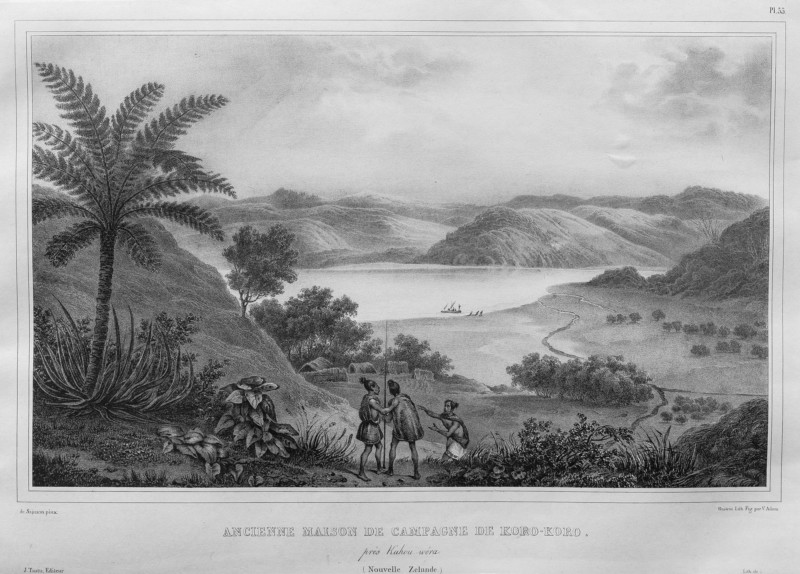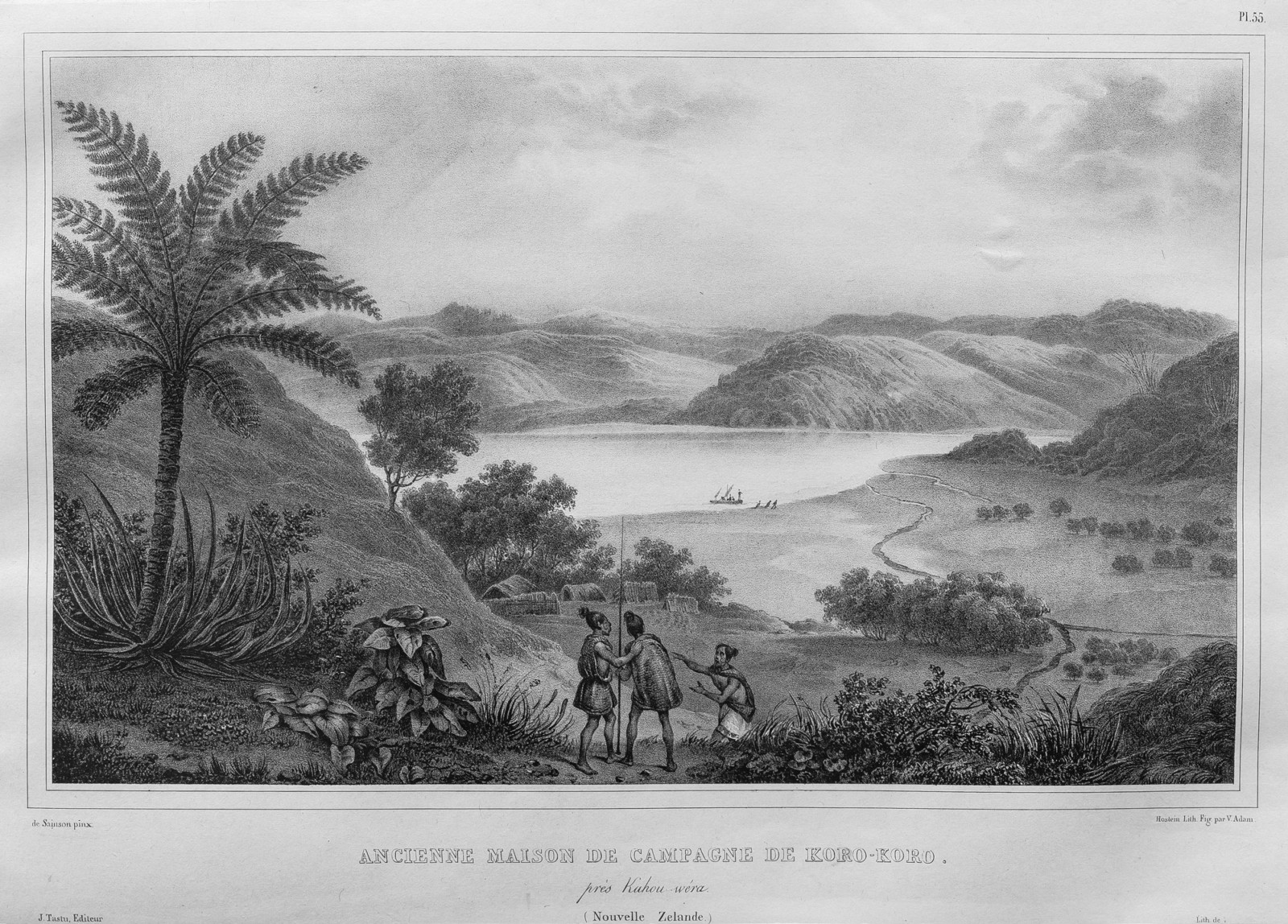DE SAINSON, Louis Auguste;
Former Country House of Korokoro, Near Kahuwera
1833
Lithograph on paper
327 x 419mm

Original title: ‘Ancienne Maison de Campagne de Koro-koro, près Kahou-wéra (Nouvelle Zélande)’. Lithographed by Édouard Jean-Marie Hostein. Figures by Jean-Victor Adam. Plate No. 56 from Jules-Sébastien-César Dumont d’Urville, Voyage de la corvette l’Astrolabe exécuté pendant les années 1826–1827–1828–1829 (Paris: J. Tastu, 1833). Other lithographs from the series can be viewed here.
The following text comes from the catalogue for the exhibition Tirohanga Whānui.
This lithograph shows Pāroa Bay viewed from a point above the sandy beach where the Astrolabe is anchored. The hill on which Kahuwera pā was formerly located rises up behind the large fern to the left. Three Māori standing in the foreground are expressing alarm at the sight of the party of seven Europeans pulling their boat ashore. Behind the Māori group, the houses (the ‘ancienne maison de campagne’ of the French title) can be seen.
In 1937, when Leslie Kelly was attempting to locate various positions in the Pāroa Bay area, he and his party landed on the sandy beach ‘in probably the same place where so many early whalers and others of their time landed in search of amusements supplied by the inhabitants of old-time Kahuwera’.
Local Māori told Kelly that three pā formerly stood on the eastern headland of Pāroa Bay. They were Kahuwera, Tarawa-tangata and Pāroa, all fortifications of Ngāre Raumati. Kelly wrote:
‘During the conquest of the Ngare Raumati many of their fortified positions were attacked and captured and the inhabitants killed and eaten, until they were completely overcome. I have been unable to discover any evidence that Nga-puhi built any pa when they occupied the district. They seem to have contented themselves with building settlements … After the original people of Kahuwera had been defeated and their land occupied by Korokoro, the latter appears to have constructed a village for himself just below the old pa of his enemies and in a more handy position to the beach.’ That is exactly how it appears in this lithograph.
Korokoro, chief of Kahuwera, was said to have been the equal of Hongi as a military leader. In July 1814, he had accompanied Hongi, Ruatara and various family members to Sydney. Here they met Samuel Marsden, acquired tools and weapons and increased their knowledge of agricultural techniques. Korokoro died in 1823 after coming back from an expedition to Hauraki with his brother Tuai, who succeeded him. In 1825, following Tuai’s death of illness and misery in October 1824, joint Ngāpuhi and Ngāi Tawake forces again fell on Kahouwera ravaging and dispersing its inhabitants.
The pā was in a dilapidated state by the time of d’Urville’s arrival the following year.
Exhibition History
Tirohanga Whānui: Views from the Past, Te Kōngahu Museum of Waitangi, 15 April to 15 September 2017

